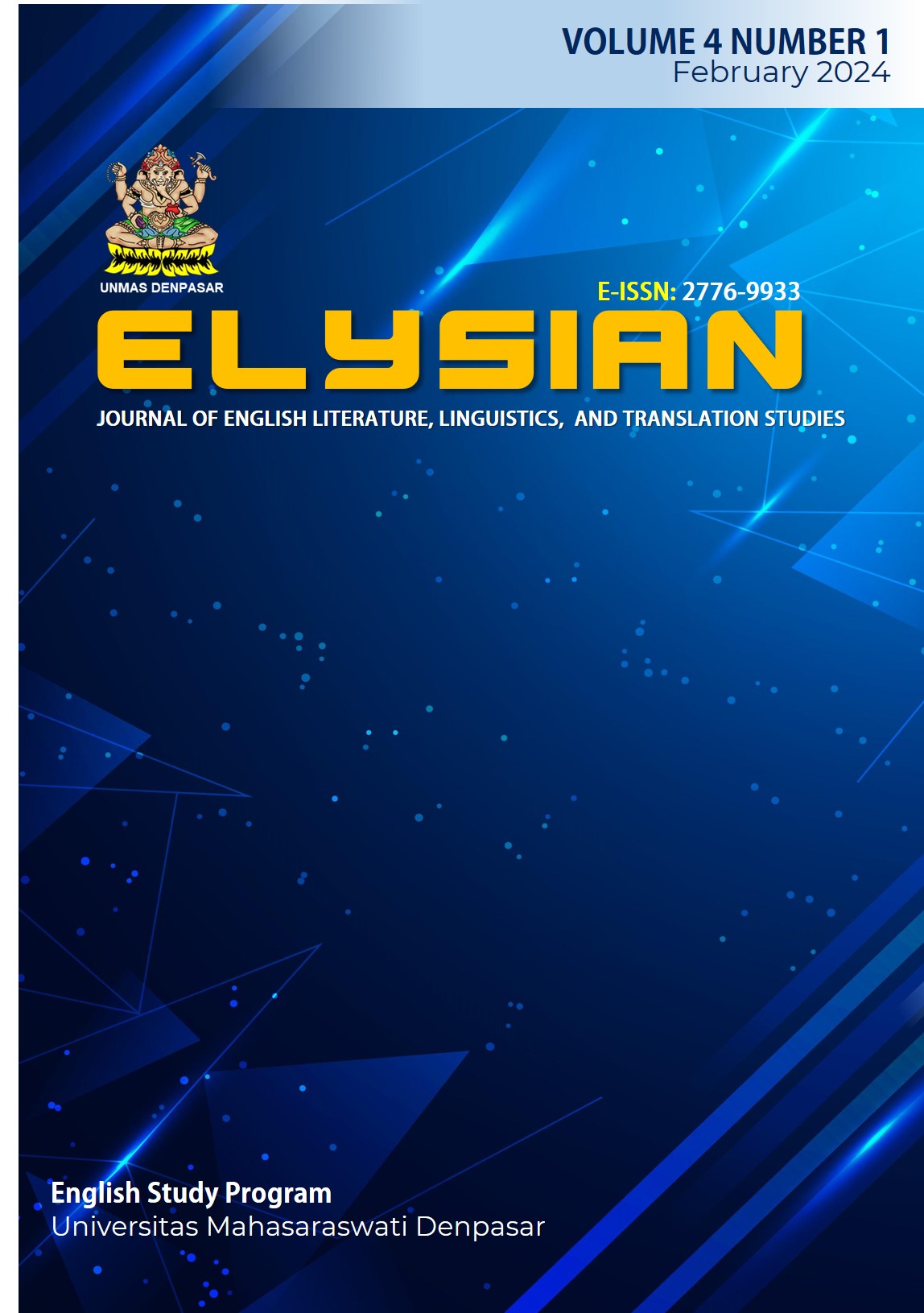Jargon on Instagram Features
DOI:
https://doi.org/10.36733/elysian.v4i1.5143Keywords:
Jargon, instagram, MeaningAbstract
Jargon is a special vocabulary used in certain area of life (environment). Jargon is rarely understood by people because it is very specific in order. The purpose of this study was to identify the form and meaning of jargons in Instagram features. The data of this study were taken from the form of words inInstagram social media platform. This study considered to use the theory of Halingga (2004) on forming jargon and Leech (1981) on meaning. Descriptive qualitative method was applied to analyze the collected data. This study found 12 data (60%) for word forms, 3 data (15%) for the phrase form, 5 data (25%) for the abbreviated form and 12 data (60%) for acronym. The meaning of the jargons reached more denotatively the same as their real meaning characteristics.
- Jargon is a special vocabulary used in certain area of life (environment). Jargon is rarely understood by people because it is very specific in order. The purpose of this study was to identify the form and meaning of jargons in Instagram features. The data of this study were taken from the form of words inInstagram social media platform. This study considered to use the theory of Halingga (2004) on forming jargon and Leech (1981) on meaning. Descriptive qualitative method was applied to analyze the collected data. This study found 12 data (60%) for word forms, 3 data (15%) for the phrase form, 5 data (25%) for the abbreviated form and 12 data (60%) for acronym. The meaning of the jargons reached more denotatively the same as their real meaning characteristics.
References
Adorno, T. (2013). The Jargon of Authenticity. Englang: Routledge.
Agustini, R. (2014). The Jargon Used in Social Media. Denpasar: English Departement Faculty of letters Warmadewa University
Hudson, K. (1978). The Jargon of the Professions. Springer. https://link.springer.com/book/10.1007/978-1-349-03199-3.
Kridalaksana. (2008). Kamus Linguistik (edisi ke-4). Jakarta: Gramedia Pustaka Utama. ISBN 978-979-22-3570-8.
Perecman, E., & Brown, J. W. (1985). Ukeleles, condessors, and fosetch: Varieties of aphasic jargon. Language Sciences, 7(1), 177-215. https://www.drjbrown.org/articles
Venhuizen, Gemma & Hut, Rolf & Albers, Casper & Stoof, Cathelijne & Smeets, Ionica. (2019). Flooded by jargon: How the interpretation of water-related terms differs between hydrology experts and the general audience. Hydrology and Earth System Sciences. 23. 393-403. 10.5194/hess-23-393-2019.
Weinstein, et al. (1966). Meaning in jargon aphasia. Cortex, 2(2), 165-187. https://doi.org/10.1016/S0010-9452(66)80001-1.
Weinstein, E. A., & Puig-Antich, J. (1974). Jargon and its analogues. Cortex, 10(1), 75-83. https://doi.org/10.1016/S0010-9452(74)80040-7
Kalangit, R. F. (2016). Alih kode dalam Instagram (suatu analisis sosiolinguistik). Jurnal Elektronik Fakultas Sastra Universitas Sam Ratulangi, 4(5)
https://scholar.google.com/scholar?hl=id&as_sdt=0%2C5&q=Kalangit%2C+R.
Kridalaksana. (2008). Kamus Linguistik (edisi ke-4). Jakarta: Gramedia Pustaka Utama. ISBN 978-979-22-3570-8








